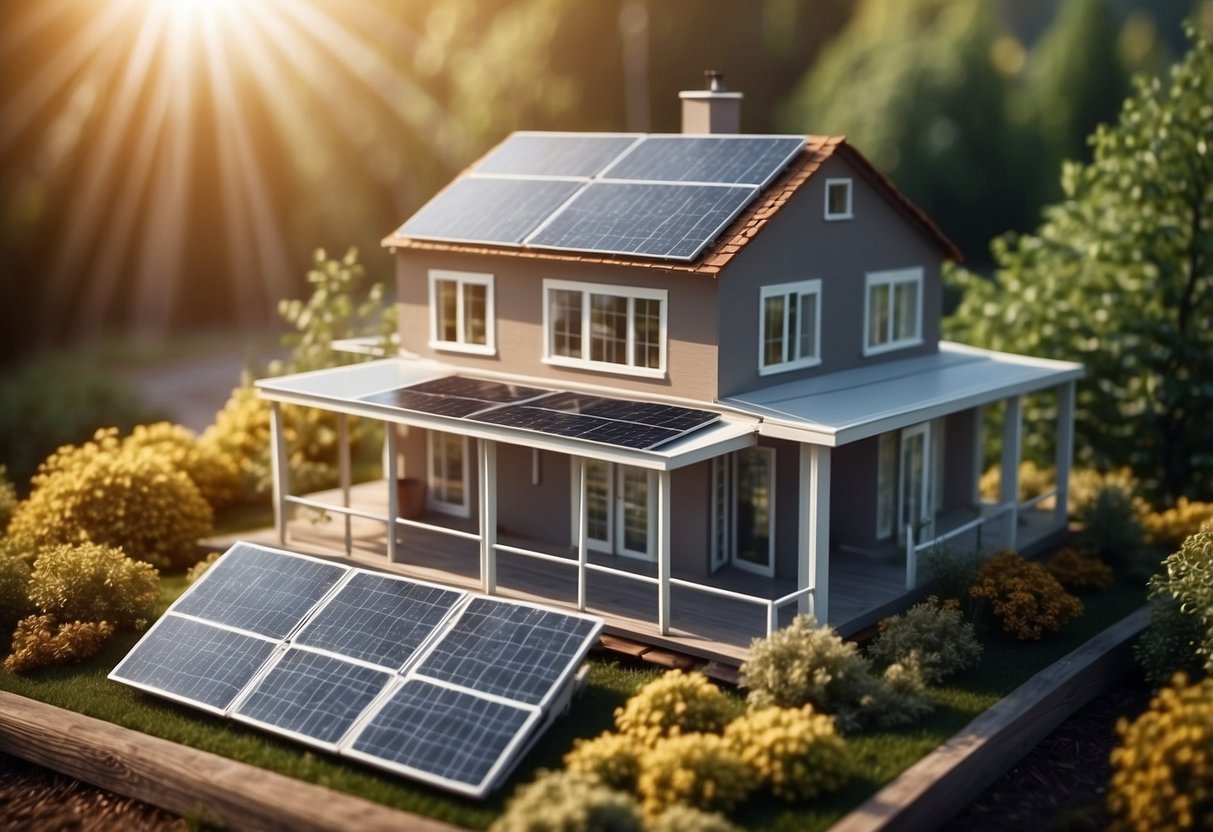
Install Solar Panels
Installing solar panels is a sustainable way to generate electricity for your home. It reduces your reliance on the grid and decreases your electricity bills.
To start, assess your roof to determine if it gets enough sunlight. Southern-facing roofs are typically the most effective for solar panels. Ensure there are no large trees or buildings blocking sunlight.
Purchase a solar panel kit that matches your energy needs. Kits usually include panels, an inverter, and mounting hardware. Follow the manufacturer’s instructions diligently.
Mounting the panels can be done with basic tools. Ensure they are securely attached to your roof. Use roof racking systems designed for solar panel installation to maintain the integrity of your roof.
Connect the panels to the inverter, which will convert the solar energy into usable electricity. This step may require some electrical know-how or professional assistance to ensure all connections are correct.
Once connected, run a test to confirm the system is functioning properly. Monitor the energy output regularly to ensure you are getting optimal performance.
Maintenance primarily involves keeping the panels clean. Dirt and debris can reduce efficiency. Regularly check and clean your panels to maintain their effectiveness.
Solar panels are a long-term investment but can significantly decrease your household’s carbon footprint and energy costs. With careful planning and effort, DIY installation of solar panels is achievable and rewarding.
9. Use Reflective Roof Coatings
Reflective roof coatings are an effective way to reduce heat absorption in homes. These coatings work by reflecting sunlight, which can lower roof temperatures significantly. By keeping roof surfaces cooler, these products help reduce the heat transferred into the home.
Applying reflective coatings is usually a straightforward process. Homeowners can typically use a brush or roller to apply the material. It’s essential to follow manufacturer’s instructions for the best results.
Reflective roof coatings are available in various types, including white coatings and aluminum-based coatings. Each type has its benefits, and the right choice depends on the specific roof material and climate. Always choose a product compatible with your roof type.
These coatings not only improve energy efficiency but also increase the lifespan of the roof. By preventing excessive heat buildup, they can reduce the wear and tear on roofing materials. This benefit helps in minimizing repairs and maintenance costs over time.
Reflective roof coatings also contribute to environmental benefits. By reducing the need for air conditioning, they help decrease energy consumption. This reduction can lower greenhouse gas emissions, making these coatings an environmentally friendly option.
In summary, applying reflective roof coatings offers several advantages, from energy savings to environmental benefits. They are a simple DIY project that can significantly impact a home’s overall efficiency.
10. Plant Shade Trees
Planting shade trees around your home can significantly reduce energy consumption. Trees provide natural cooling by blocking sunlight and reducing heat buildup. This can lower indoor temperatures, decreasing the need for air conditioning.
Choose the right type of trees for your climate. Deciduous trees, which lose their leaves in winter, are a great option. They provide shade in the summer and allow sunlight in during the winter months.
Plant trees on the east and west sides of your house. This placement helps block the strongest sunlight during the morning and late afternoon. Make sure to consider the mature height and spread of the trees to avoid interference with power lines or structures.
Tree placement can also enhance your home’s curb appeal. Attractive landscaping adds value to your property while making it more energy-efficient. Additionally, trees can reduce noise pollution and improve air quality.
Watering and care are essential for young trees. Ensure they have enough water, especially during dry periods. Mulching around the base helps retain moisture and prevent weeds. Regular pruning keeps trees healthy and maintains their shape.
By investing in shade trees, homeowners not only save on energy bills but also contribute to a greener environment. Trees add beauty, comfort, and long-term savings, making them a practical and aesthetically pleasing upgrade.